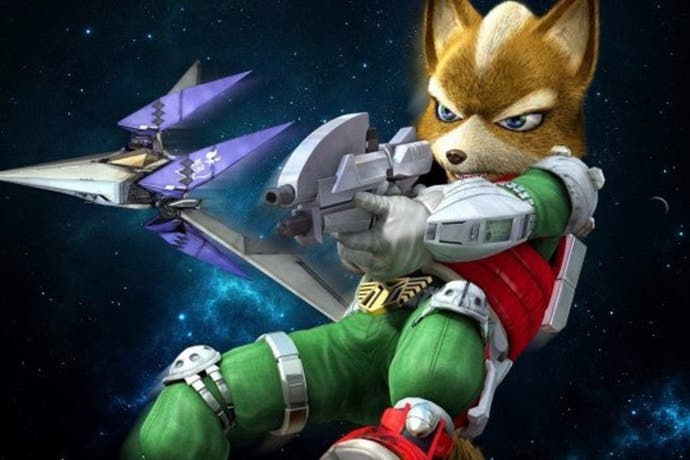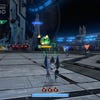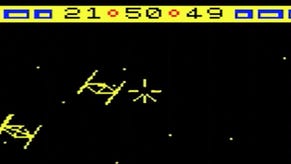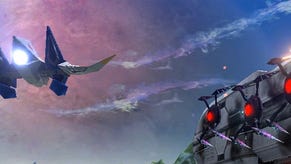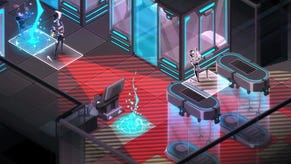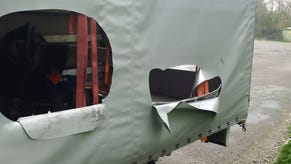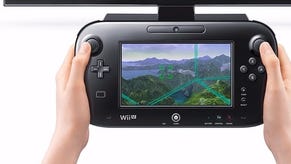Digital Foundry: Hands-on with Star Fox Zero
A classic Nintendo franchise returns, with Platinum Games on coding duties.
Sadly absent on Nintendo's last console, the high-achieving Platinum Games revives a much-loved franchise on Wii U this month. After many delays to get its controls just right, Star Fox Zero makes smart use of the GamePad's oft-neglected second display and gyro controls, now letting us move and shoot in different directions. As integral as it may be to piloting the Arwing, it's clear this dual-screen dynamic demands a lot from the Wii U - but how does the final experience stack up overall?
The most striking addition to Star Fox Zero is the new control method. Taking a page out of Splatoon's book, you move the aiming reticle by tilting the GamePad around, while the ship's roll, pitch and yaw are mapped to its two analogue sticks. It's a difficult system to pick up at first, but the principle is sound; the main HDTV is used to weave the ship around obstacles, but for finer aiming, you must look down to the smaller screen. This way, it's possible to fire above, below, and to your flanks in a way that isn't possible in earlier games, where flight controls and targeting were linked to one analogue stick, and always facing forward.
As a result of this shift, the learning curve is much steeper than any previous Star Fox game. The system works brilliantly once you get the hang of it, and the built-in gyrometer is again surprisingly accurate for targeting. The only quibble we have on this front is the need to re-centre the reticle - by pressing the Y button - on rare occasions where your orientation drifts. Splitting the gameplay between two screens also takes some adapting to; you can focus purely on the HDTV if you like, but the targeting reticle is prone to moving outside the visible range of that display. Getting on board with the idea of switching screens is key, and there's a definite power to this multi-task approach once you master it.
Visually, Star Fox Zero puts its best foot forward with the lush Corneria stage; a utopia under siege. As with the SNES and N64 games before it, this opener is a multi-faceted course built around valley greenery, revealing plenty of hidden paths and secrets on repeat play. And just as the 1993 original was keen to show off the bounds of its cutting edge SuperFX chip (at the time allowing full, polygonal 3D gameplay on the SNES), this opener is also something of a stress test for Platinum's engine on Wii U - pushing for a fast flurry of explosive effects right off the bat.
Performance is tested on the game's release code, and 60fps is the intended target with v-sync engaged. However, while long stretches of play hold at that top refresh figure, it's certainly not a perfect lock on that number. It's clear the first stage's deluge of water shaders and alpha effects really test Wii U's mettle, and the net result is intermittent dips to around 50fps. At its extremes in the following Sector Alpha stage, a space mission set around warring motherships, that can even lurch down to 40fps for the heaviest bursts of action.
Star Fox Zero thrives on some brilliantly orchestrated levels - an arcade-style experience with unique, well-worked controls. Visually, it may be built on relatively simple geometric designs for aircraft and terrain, but it's a clean, practical style that meshes well with its rapid pace. The fact its frame-rate is in flux is a shame though, and as a result, controller response isn't quite as solid as we had hoped. Much like the developer's earlier work on the excellent Bayonetta, it's essentially a 50-60fps range in performance, but the quality of the game makes its shortfall easier to forgive.
Looking to the cause of these drops, we can't help but wonder if it comes as a result of its main party trick: the dual-screen gameplay. Rather than mirroring the main screen, the Wii U renders out two separate viewpoints of the game simultaneously; one to the HDTV, and the other to the smaller GamePad screen. The native resolution of the main screen is 1280x720 (no anti-aliasing applied here), but this also has to combine with the 854x480 resolution of the smaller display. Tallied together, the overall pixel output is higher than your typical Wii U title.
It's the core hook of the experience though, and Star Fox Zero benefits hugely from the dynamic it brings. It gives more power to the player, and with practice, there's potential to pull off some incredible level runs. But the fact that alpha effects cue each dip is revealing, and a telltale sign that Wii U's memory bandwidth is indeed a bottleneck in this instance - a resource also tapped into by the console's chosen pixel output. Delivering 60fps gameplay to two screens at once is no small feat, and while removing the second screen may well have locked the performance level, it would have robbed the game of its innovating gameplay mechanic.
In all, Star Fox Zero brings something unexpected to the table, and we've enjoyed our time with it so far. Due for release on April 22nd, it's one of the last major Wii U releases on the calender, but ranks alongside Super Mario Maker as one of the best uses of its unique GamePad. It's a great send-off for a system that now appears to be on its last stretch. Looking to Nintendo's plans for the NX though, it'll be interesting to see how backwards compatibility is handled - or not - for games so tightly woven into the design of its current machine.
